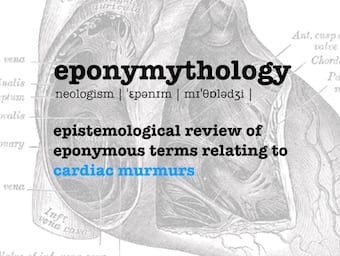
Name that murmur
Eponymythology: heart murmur eponyms and named cardiac murmurs. Related eponyms, the person behind their origin, their relevance today, and modern terminology.

Eponymythology: heart murmur eponyms and named cardiac murmurs. Related eponyms, the person behind their origin, their relevance today, and modern terminology.
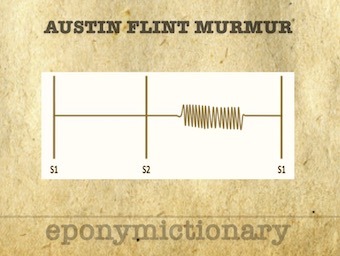
Austin Flint Murmur: Mid diastolic, low pitch rumble heard best at the apex. Absence of opening snap/loud S1 distinguishes from that of mitral stenosis

Charles Aston Key (1793 –1849) was an English surgeon. Eponym: Key-Hodgkin murmur (1827)
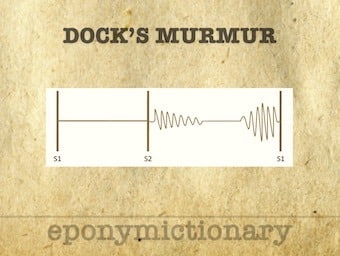
Dock’s murmur: Early diastolic murmur when there is a severe stenosis of the left anterior descending coronary artery. 1967 William Dock
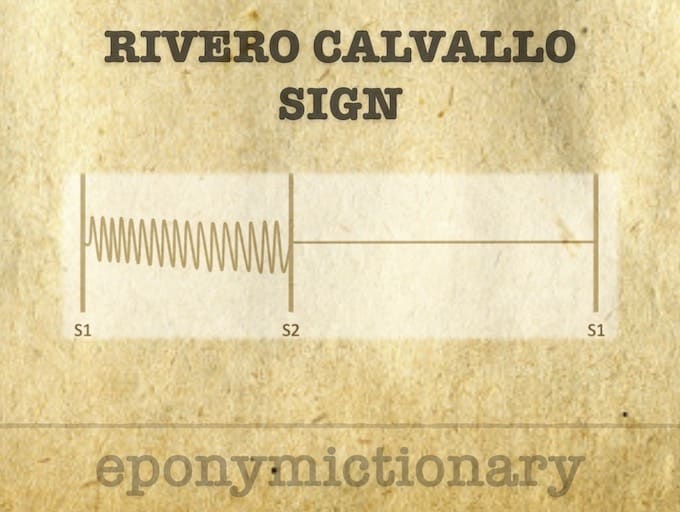
Accentuation of the murmur of tricuspid stenosis with inspiration described by Mexican cardiologist José Manuel Rivero Carvallo (1905–1993) in 1946

José Manuel Rivero-Carvallo (1905-1993) Mexican cardiologist. Rivero Carvallo sign (1946), enhanced murmur of tricuspid regurgitation on inspiration

Thomas Hodgkin (1798 – 1866) was an English physician and pathologist. Eponym: Hodgkin disease (1832); Key-Hodgkin murmur (1827)
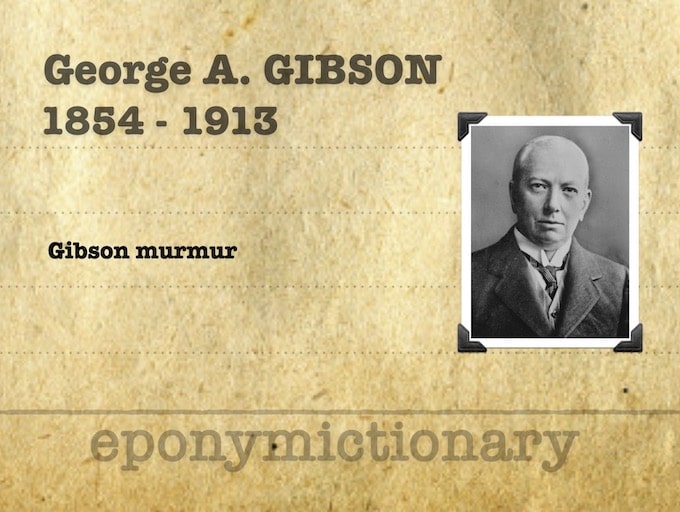
George Alexander Gibson (1854 – 1913) was a Scottish physician. Eponymously affiliated with the Gibson murmur (1906)

Still's Murmur ejection systolic murmur first described in 1909 by English pediatrician Sir George Frederic Still KCVO (1868 – 1941)
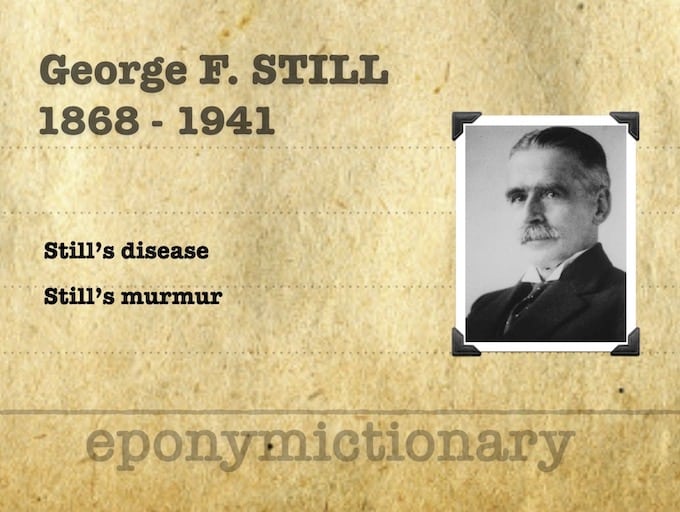
Sir George Frederic Still (1868-1941) English paediatrician. Described as the 'father of British paediatrics'. Still's disease, Still's murmur

Austin Flint (1812-1886) American Physician. Eponym - mid-diastolic aortic regurgitant murmur heard at the apex - Austin Flint Murmur 1862

Roger’s murmur: holosystolic, loud murmur compared to the sound of a 'rushing waterfall'. Associated with ventricular septal defects (VSD)